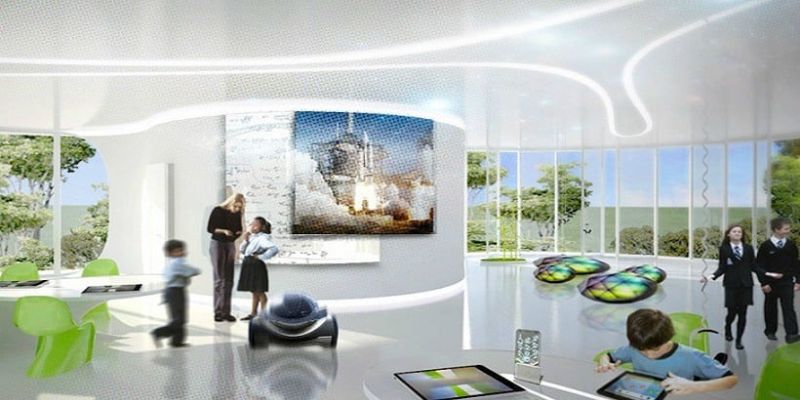Introduction to Classroom 15x
Education is undergoing a profound transformation to meet the evolving demands of the digital era. Traditional classroom models are becoming obsolete, paving the way for innovative learning environments that prioritize flexibility, collaboration, and technology integration. One such groundbreaking concept is Classroom 15x, a revolutionary approach that amplifies learning effectiveness through dynamic teaching methods and interactive spaces.
In this in-depth guide, we explore what Classroom 15x entails, how it benefits educators and students, and the steps required to implement it successfully.
Understanding Classroom 15x
Classroom 15x is not just about increasing the physical dimensions of a classroom; it represents a fundamental shift in educational methodologies. The term “15x” symbolizes the potential to enhance learning outcomes fifteenfold by fostering creativity, collaboration, and technology-driven instruction.
Key Features of Classroom 15x
- Flexible Learning Spaces
Traditional rigid seating arrangements are being replaced with modular furniture that facilitates movement and interaction. Students can seamlessly switch between group discussions, independent study, and interactive sessions. - Blended Learning Approaches
Classroom 15x integrates traditional face-to-face instruction with online resources, enabling students to learn at their own pace. Digital platforms provide access to customized learning materials that cater to different learning styles. - Seamless Technology Integration
Cutting-edge tools like interactive whiteboards, tablets, virtual reality (VR), and artificial intelligence (AI) play a central role in the Classroom 15x model. These technologies enrich learning experiences and make education more engaging. - Emphasis on Critical Thinking
Classroom 15x moves beyond rote memorization by encouraging students to analyze, evaluate, and solve real-world problems. Educators design lessons that challenge students to think deeply and develop problem-solving skills. - Student-Centered Learning
The teacher’s role evolves from being a knowledge provider to a learning facilitator. Students take charge of their education, exploring subjects, conducting research, and leading discussions.
Advantages of Classroom 15x
1. Enhanced Student Engagement
Interactive environments and personalized learning keep students actively involved. When learners are engaged and motivated, they are more likely to retain information and perform better academically.
2. Improved Collaboration and Teamwork
The emphasis on group projects and peer learning prepares students for workplace collaboration. By working in teams, students develop communication skills, empathy, and the ability to compromise.
3. Catering to Diverse Learning Styles
Every student learns differently. Classroom 15x offers a variety of instructional techniques, including visual aids, hands-on activities, and auditory learning resources, ensuring inclusivity.
4. Higher Retention and Knowledge Application
When students actively engage with the material and apply concepts in real-world scenarios, they retain information longer than through passive memorization.
5. Future-Ready Skill Development
The modern workforce demands skills beyond academic knowledge. Classroom 15x focuses on developing creativity, adaptability, resilience, and digital literacy, making students industry-ready.
How to Implement Classroom 15x in Schools
1. Redesigning Learning Spaces
Creating a flexible and collaborative environment starts with rearranging the classroom layout. Desks should be arranged in clusters, with different areas for discussion, individual work, and technology-assisted learning.
2. Leveraging Technology Effectively
Introducing technology into classrooms requires more than just providing devices. Schools must adopt learning management systems (LMS), AI-driven assessment tools, and cloud-based collaboration platforms.
3. Adopting Inquiry-Based Learning
Encouraging students to explore, ask questions, and find solutions fosters independent thinking. Project-based and problem-based learning approaches should be integrated into the curriculum.
4. Encouraging a Growth Mindset
Students should be taught the value of resilience, constructive feedback, and continuous learning. A growth mindset helps learners embrace challenges and view failures as opportunities for improvement.
5. Building a Supportive Learning Community
Successful implementation requires active collaboration between teachers, students, and parents. Regular feedback sessions, open communication channels, and professional development for educators are crucial.
Challenges of Classroom 15x and Solutions
1. Resistance to Change
Educators, students, and parents may resist new learning methods. Conducting awareness workshops and training sessions can ease the transition.
2. Budget Constraints
Implementing Classroom 15x requires investments in technology, infrastructure, and training. Schools can seek grants, partnerships, and government support to overcome financial barriers.
3. Ensuring Digital Equity
Not all students have access to high-speed internet or personal devices. Schools should provide shared resources and offline learning options to bridge the digital divide.
FAQs About Classroom 15x
What is Classroom 15x?
Classroom 15x is an advanced learning model that enhances education through flexible spaces, digital tools, blended learning, and student-centered approaches. It aims to amplify engagement, collaboration, and critical thinking.
How does Classroom 15x benefit students?
It improves engagement, collaboration, adaptability, and problem-solving skills. Students gain hands-on experience and develop future-ready skills for the evolving job market.
Is Classroom 15x expensive to implement?
While initial investments are needed for technology and infrastructure, schools can start with small changes and gradually scale up. Seeking grants and partnerships can also help manage costs.
Does Classroom 15x require new teaching methods?
Yes. Educators must shift from lecture-based teaching to interactive, inquiry-based, and technology-enhanced methods. Training and professional development are essential.
Can Classroom 15x be applied in all educational institutions?
Yes, but implementation strategies may differ. Schools with limited resources can adopt Classroom 15x in phases, starting with minor adjustments in teaching techniques and classroom design.
Conclusion: The Future of Learning with Classroom 15x
As education continues to evolve, Classroom 15x stands as a powerful model for transforming traditional learning spaces into interactive, technology-driven, and student-centered environments. By fostering collaboration, critical thinking, and adaptability, this approach prepares students to thrive in a rapidly changing world.
Implementing Classroom 15x may present challenges, but with strategic planning, professional training, and stakeholder collaboration, schools can successfully transition into this new era of education. Embracing Classroom 15x is not just an innovation—it’s a necessity for shaping the learners of tomorrow.


